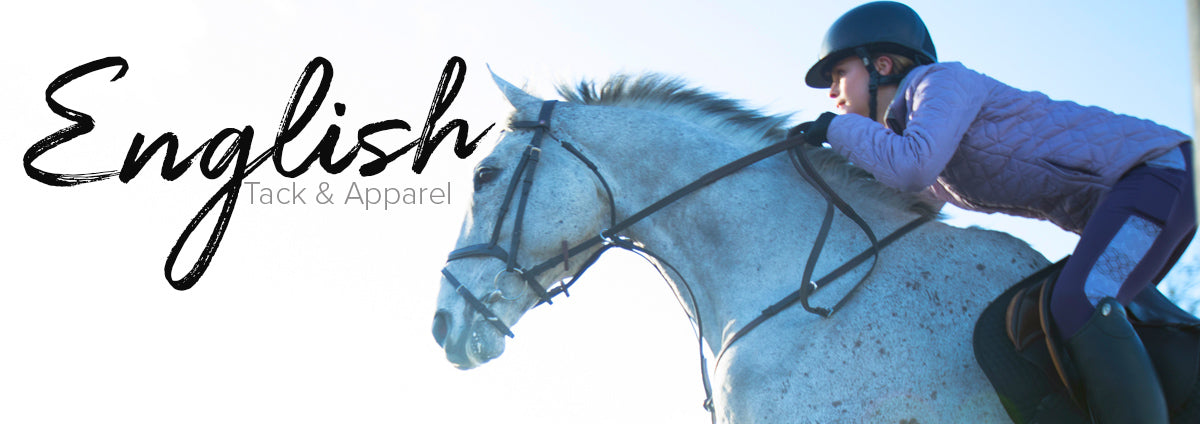
Collection: English Tack
-
Bits
Shop our huge line of English bits from top brands.. English bits...
-
Bridles
English horse bridles are an essential piece of English horse tack. They are...
-
Girths
English girths keep your all purpose or close contact saddle on your...
-
Breastplates & Martingales
Breastplates or martingales are horse equipment that can be used together or...
-
Saddles
English saddles are a generic term for saddles which encompass all of...
-
Saddle Pads
English saddle pads available for all your showing or schooling needs. English...
English Horse Tack Basics
The beauty of English horse tack is that it’s both classic and constantly evolving. Most English tack for horses is available in traditional leather and synthetic versions. When you peruse English horse tack for sale, the sheer variety is amazing, but every item is designed for a specific purpose.
Bits – There’s a bit suitable for every horse at various stages of training. Choosing the right bit for your horse is an art and a science. Some horses may do well in a particular bit because of their individual mouth structure. A horse may require different bits for different types of riding. For example, a horse that goes well in a snaffle while in the ring may need a bit with more leverage when riding cross-country or foxhunting.
Bridles - The basic English bridle consists of two cheek pieces, a caveson and noseband and throatlatch. From there, you can move on to more specialized pieces of equipment, including nosebands created for certain disciplines or training issues. Bitless bridles control a horse via pressure rather than a metal mouthpiece. Reins are often sold separately from bridles, so you can choose the type of reins you prefer. Any part of a bridle is also available separately, so if you want to change brow bands, cavesons or the like, you need only purchase that piece rather than a new bridle.
Breastplates and Martingales – Breastplates help prevent saddle slippage, especially at speed or over fences. Martingales help prevent head tossing and aid evasion, and are available in three distinct types, although there are variants:
Running – Attached to the reins, this type of martingale provides the rider with additional leverage.
Standing – This martingale attaches to the girth, with the strap going between the front legs and fastening on to the noseband.
German – Used primarily for training, the German martingale is similar to a running martingale, but with additional leverage.
Girths – These essential parts of English tack keep the saddle on the horse by fastening to billets straps on either side of the saddle. While girths come in various sizes to fit the horse, the two primary types of girths are English and dressage. They are not interchangeable because of the difference in billet strap length on hunt seat and dressage saddles.
Stirrups – Choose English stirrups to best suit your needs. Classic stirrup irons fill the bill for show and any other purposes, while technical stirrups can help relieve pain in a rider’s hips or ankles. Many riders prefer safety stirrups, which guarantee a quick release in case of a fall.
Stirrup Leathers - Although not necessarily made of leather these days, stirrup leathers have holes in them at intervals for proper adjustment to a rider’s leg length. It is possible to punch additional holes if needed in genuine leather “leathers,” but this is not always the case with leathers made from synthetic materials.